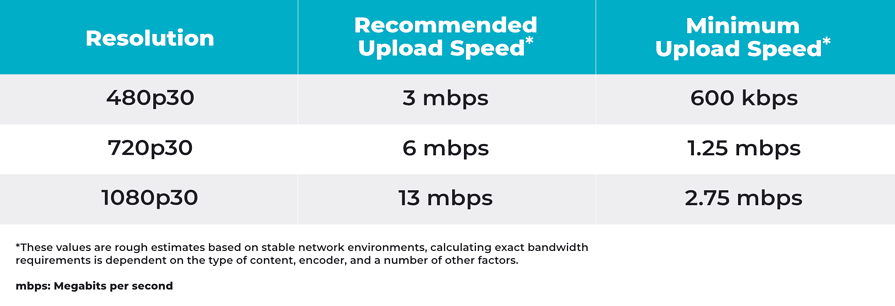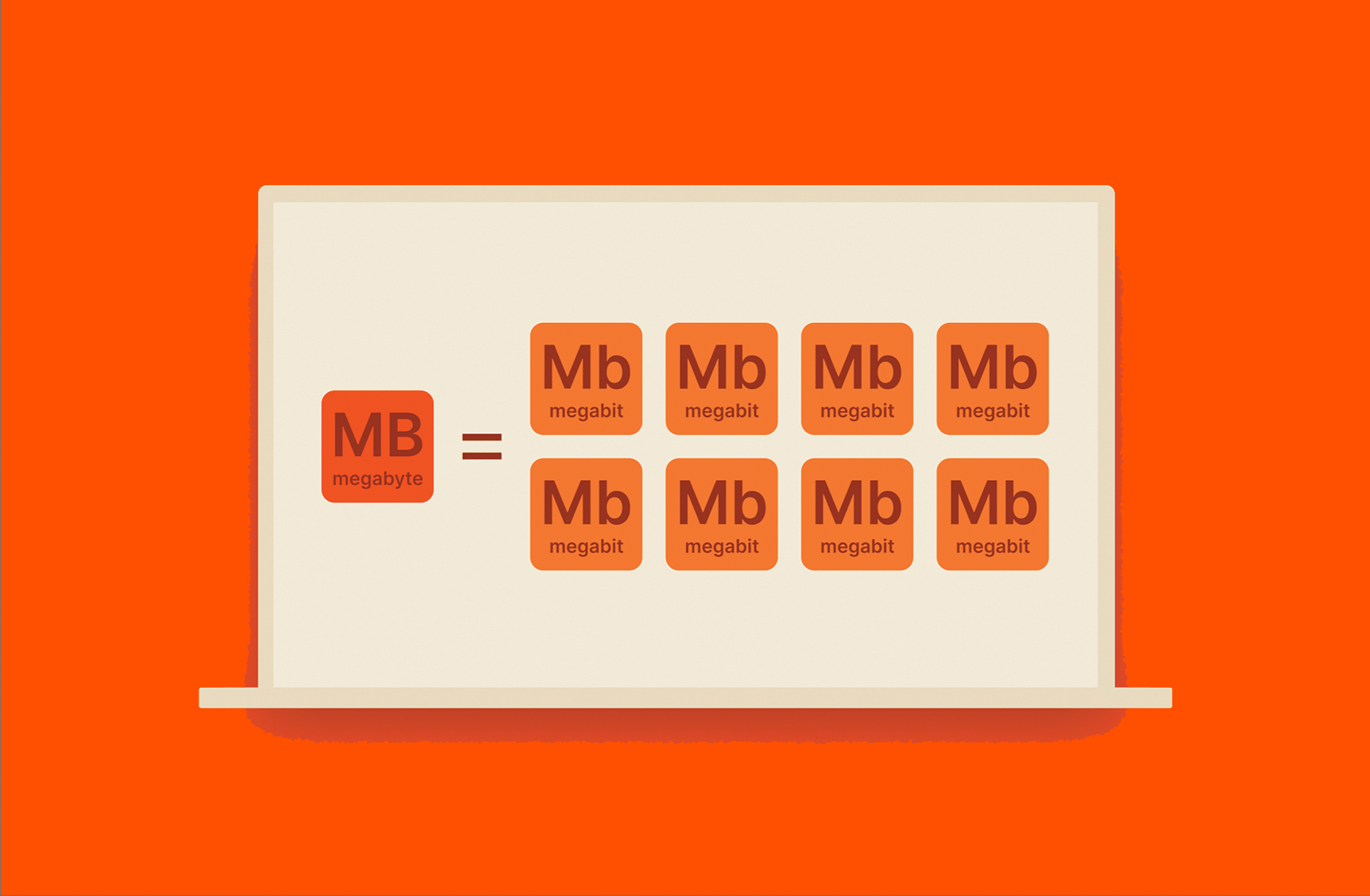How Megabits Per Second Effect Your Online Activities
The idea of megabits per second (Mbps) plays a pivotal role in forming our on the internet experiences. As electronic activities multiply, understanding the implications of Mbps on video gaming, streaming, and video clip conferencing ends up being increasingly important. Greater Mbps can improve efficiency and lower disruptions, while inadequate rates may promote irritation and inadequacy. Examining your family's specific needs in relationship to these rates is essential, especially as multiple tools try bandwidth. Yet, the subtleties of how Mbps impacts numerous online activities call for further exploration, specifically as our reliance on digital connection continues to progress.
Comprehending Megabits Per Second
When thinking about web rate, it's important to understand the principle of megabits per second (Mbps), which functions as a conventional measurement for information transfer prices. This metric measures just how much information can be transmitted over an internet link in one second, giving a clear understanding of efficiency abilities - Megabits Per Second. For context, one megabit is equivalent to one million little bits, and Mbps is typically used to reveal bandwidth for numerous on-line tasks
A higher Mbps indicates a faster internet connection, making it possible for customers to perform jobs such as downloading data, searching sites, and taking part in on the internet gaming extra successfully. Regular browsing requires around 1-5 Mbps, while streaming high-definition video may require 5-25 Mbps. Understanding these requirements is essential for determining the ideal web rate required for certain activities.
Furthermore, the number of gadgets attached to a network can impact total performance. Several customers streaming, video gaming, or downloading and install at the same time can stress offered data transfer, causing slower rates - Megabits Per Second. Reviewing personal online habits and demands is essential in picking a net strategy that straightens with one's needs, making certain a seamless digital experience
Streaming and Buffering Issues
Streaming high-def content has become a staple of modern on the internet amusement, yet it is usually gone along with by discouraging buffering concerns. These disruptions can significantly diminish the watching experience, resulting in frustration and possible loss of target market involvement. Buffering happens when the data transmitted from the streaming solution is not gotten promptly enough to keep a smooth playback, usually as a result of insufficient internet rate measured in megabits per second (Mbps)

Moreover, real-time streaming can be affected by network blockage, which happens when several tools share the very same transmission capacity. Consequently, enhancing link rate and making sure ample Mbps is important for a seamless streaming experience. As streaming services proceed to develop, recognizing the influence of Mbps on buffering issues stays important for consumers looking for undisturbed home entertainment.
Online Gaming Performance
The impact of web rate on on-line activities expands past streaming, considerably affecting on-line video gaming efficiency. In affordable gaming, low latency and high data transfer are crucial for a smooth experience. A quick link lessens lag, allowing players to respond swiftly to in-game events, which can be the distinction in between success and loss.
Transmission capacity, gauged in megabits per second (Mbps), plays an important function in supporting several gadgets and pc gaming platforms concurrently. Not enough data transfer can result in dropped connections or minimized game quality, adversely influencing gameplay. Online multiplayer games need substantial information transfer, especially during peak video gaming hours when numerous players are online.
Fast-paced first-person shooters require higher speeds to maintain responsiveness, while turn-based method games might function fairly well on lower rates. As on-line gaming continues to advance, with enhancing graphical integrity and even more intricate multiplayer atmospheres, the demand for greater Mbps will just escalate.
Video Clip Conferencing Top Quality
In today's electronic landscape, video conferencing top quality is greatly affected by web speed, specifically in terms of transmission capacity and latency. High-quality video calls need adequate transmission capacity to transfer audio and video information effortlessly. Commonly, a minimum of 1.5 Mbps upload and download speeds is advised for standard meaning video clip, while high-definition video conferencing generally demands at least 3 Mbps.
Latency, or the delay in between sending out and getting information, additionally plays a crucial duty in the user experience. Low latency ensures that discussions flow naturally without awkward pauses or disruptions. Preferably, latency needs to be below 150 milliseconds for effective communication. Greater latency can bring about echo, lag, and disjointed interactions, which can prevent collaboration and involvement during conferences.
In addition, multiple individuals in a video clip seminar can strain offered transmission capacity, demanding even greater rates. Network congestion, usually brought on by synchronised tasks like streaming or downloading, can better break down video clip high quality. Hence, for organizations depending on video conferencing for remote collaboration, recognizing the connection in between megabits per second and general communication high quality is important for maintaining performance and improving digital interactions.
Picking the Right Net Plan
Choosing a suitable net plan is important for making sure optimal efficiency in numerous online tasks, particularly in setups that require high transmission capacity, such as video clip conferencing and online pc gaming. Megabits Per Second. When considering a net strategy, it is important to examine both the rate and information allocation to match your specific usage needs
For families with numerous users taking part in simultaneous tasks, a strategy offering higher megabits per second (Mbps) is advised. Typically, a minimum of 25 Mbps appropriates for typical streaming and surfing, while plans exceeding 100 Mbps are better for even more intensive jobs. Furthermore, take into consideration the nature of your online tasks; video conferencing calls for a minimum of 1.5 Mbps upload rate, while on-line pc gaming might need a reduced latency however consistent link.
It is likewise crucial to evaluate your information cap. Limitless information plans can check it out protect against throttling and disturbances, particularly if hefty usage is prepared for. Lastly, study provider in your area, as accessibility and pricing can vary. By thoughtfully choosing a net strategy browse around these guys customized to your needs, you can boost your on the internet experience, ensuring smooth, nonstop accessibility to your preferred activities.
Conclusion
To conclude, the importance of megabits per second (Mbps) in shaping on-line activities can not be overemphasized. Higher Mbps facilitates seamless streaming, decreases buffering, enhances gaming experiences, and guarantees premium video clip conferencing. Conversely, poor transmission capacity can lead to irritating interruptions and reduced efficiency across various tasks. Consequently, a thorough understanding of individual or home Mbps demands is crucial for picking a suitable internet plan that adequately sustains varied online tasks and customer needs.

Normally, a hop over to here minimum of 25 Mbps is appropriate for conventional streaming and browsing, while strategies going beyond 100 Mbps are more effective for more extensive jobs. Furthermore, consider the nature of your online tasks; video clip conferencing calls for at the very least 1.5 Mbps publish speed, while online pc gaming may require a reduced latency however regular connection.